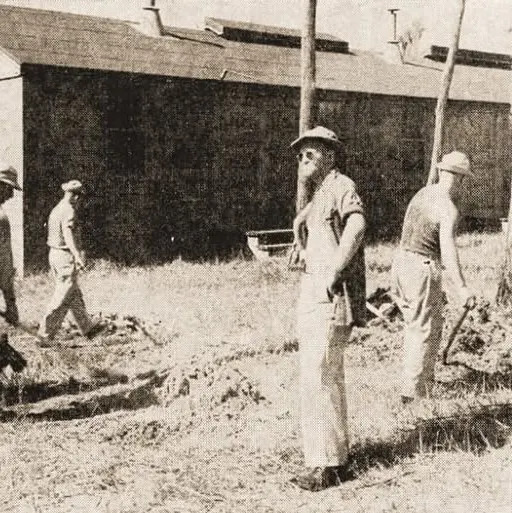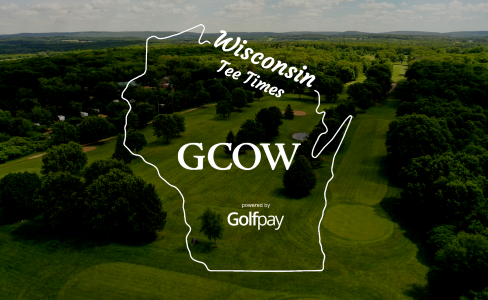The final damaged Tropicana Field roof panel has been replaced, which means we are on track to have the stadium ready for the April home opener. With the current lease agreement ending after in 2028, the team is certainly feeling some urgency to, as developers like to say, “turn dirt” on a new stadium.
We will continue our practice of diving into the pros and cons and random musing of potential stadium locations, and today we are looking at a site near Tampa Bay and the Courtney Campbell Causeway, the current home of the Rocky Point Golf Course. This site was mentioned as a possible location here and here. (We’ve covered the other primary rumored site at Dale Mabry campus of Hillsborough Community College here).
Advertisement
The Rocky Point Golf Course comprises 100 acres, which fits the size sought by the new ownership group. It has been in existence since 1911, first as a private course created by the Tampa Automobile Club for its members.
After the US entered the Second World War, the federal government took control of the property, building barracks to house the Women’s Air Corps and then later as a satellite site for German prisoners-of-war (they were used to provide labor for the expansion of nearby Drew Field, now Tampa International Airport). At some point during the war the golf course was also reopened for use by military personnel.

The federal government turned the site over to the City of Tampa in the 1950s.
Advertisement
The city leased the golf course to a private course manager for 25 years and then, in the 1970s, to the recently formed Tampa Sports Authority. Rocky Point Golf Course is one of three municipally owned courses in Tampa (Babe Zaharias and Rogers Park are the others).
What’s appealing about the site
Beyond the size of 100 acres, no people or businesses (other than golf course operations) need to be displaced, and there are few structures that would need to be demolished.
Access to the site is good, with the Veterans Expressway passing close by, although I could imagine the Courtney Campbell Causeway, which connects Hillsborough to Pinellas Counties, would have some serious traffic jams on game night. Proximity to the airport is a small benefit to teams flying in and out. There are a few HART bus lines that go near the site; changing some routes and adding bus stops by the stadium would not be difficult to do.

Sitting close to the Bay, building on the site has the potential to include water views. There are hotels nearby, and some restaurants, both in Westshore and along the Causeway, although even those that are close in distance are not easily walkable (although new investments in pedestrian infrastructure could change that.) Of course, the team owners plan to create a larger district around the stadium, which would provide additional hotel rooms and restaurants in the immediate stadium area. Shuttles could connect the stadium with Westshore parking garages, most of which are underutilized evenings and weekends, to avoid having to put all parking on site.
Advertisement
Let me interject here that I think converting a golf course into….something else is also a plus. I’m not inherently anti-golf. But for a number of reasons, golf courses are problematic land uses, and we should probably have fewer of them. There are an estimated 81 golf courses (not all are 18 holes) in Hillsborough County at a time when the golfing population is in decline.
A growing number of golf courses are struggling to remain solvent; in recent years the Pebble Creek golf course has closed with the owners unsuccessfully trying to change the zoning to build housing, and the University of South Florida is in the process of closing and redeveloping its course. Golf courses are increasingly becoming money losers that occupy hundreds of acres of land that could be used (more profitably and with more community benefits) for other purposes. From what we can glean from public records, Rocky Point appears to be covering its expenses, however.

Moreover, golf courses are terrible for the environment. I know that we see golf courses, with their rolling greens, as “natural” areas: they are anything but. They require intensive use of pesticides and fertilizers, many of which are potentially harmful to humans. Indeed, golf courses are considered to be contaminated “brownfield” sites and cleanup is required, by law, before any redevelopment. Golf courses also require constant watering; they are among the biggest drains on local water systems.
Advertisement
Disadvantages of this site
There’s a big one. According to Tampa City Code, any time the city sells a park or leases it for more than 25 years, the sale/lease agreement must submitted to voters for approval. Rocky Point, despite not having been used as a park, is apparently considered park land, and therefore it’s sale would need to be approved in a referendum. I don’t think I need to point out how undesirable that must be from the point of view of team owners. The measure would need to be placed on the ballot which could mean delays; the team would have to spend time and good will spearheading a “vote yes” campaign; uncertainty over the outcome of a vote would put plans on ice for many months if not years.
Which makes me wonder whether leasing the site to the team for 25 years might be a way to get around the referendum conundrum. The original Tropicana Field lease was 30 years, would shaving five years off of that term make it less feasible to build a stadium and associated commercial development? Would there be anything preventing the city from providing a new lease once the 25 years are up? If the team is looking to purchase the land, or lease it for longer than 25 years, I would imagine the need for a referendum is a massive poison pill.

Another problem is that the site is located in the riskiest sort of flood zone (you can look up flood zones here but you can also just look at a map and realize that a low-lying property that close to the Bay has significant flood risk.)
Advertisement
Perhaps surprisingly I don’t think this is a deal-breaker. Architects and engineers building a stadium/commercial area in a flood zone can design to keep buildings and infrastructure safe from flooding. Of course severe flooding after a tropical storm could disrupt some games, but there are few sites in our region that would not feel the impact of significant storm activity. As a region we need to learn how to plan and design for weather events; if that golf course site is going to be redeveloped I’d prefer to have a stadium and stores at that location than turn it into a residential area that puts people and their homes at risk.
Finally, I may not love having a glut of golf courses in our county, but this particular golf course is nearly 115 years old, which counts for something in a region with few century-old touchstones. If the Rays decide to build here, expect a lot of pushback from golfers.
Final Thoughts
Despite some significant caveats, this could be an interesting stadium location. The views would be stunning, it’s close to the Westshore business district, and displacing one of the county’s 81 golf courses is less problematic than, say, moving or building around a community college. If there are legal ways to develop the property without triggering a referendum, and if there are engineering fixes to help make development resilient in the face of inevitable flooding events, then it could be a strong contender for the new home of the Rays.







